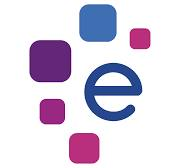Origination Phase
Various stages ensure thorough assessment and validation in the credit card origination phase. Pre-qualification begins with applicants providing essential details, leading to an issuer's pre-approval. Subsequent documentation and authenticity verification, complemented by application processing tools and underwriting decision engines, play pivotal roles in evaluating and approving credit card applications. Post-underwriting, the credit decision process determines outcomes and potential adjustments, while card issuance and contract formalization through digital signatures finalize the process. Here’s an overview of each stage and providers that may aid you in this process.
Pre-Qualification Process/Credit Card validation sources
In the credit card application process, pre-qualification begins with the applicant providing essential details to the issuer or a third party. This information includes identity, address, employment, income, payment history, and desired credit limit. Based on this, the issuer pre-approves the credit card, allowing the application to proceed.
Traditional credit bureaus offer internal credit scores and detailed credit histories through APIs or batch files to assess creditworthiness. Emerging alternative data sources, such as utility bill payments, social security data, and even private ecosystem information like Uber driver data, are expanding the scope beyond traditional credit metrics.

Experian
Equifax

Transunion
Application Processing KYC/KYB
Upon receiving the application, the credit department conducts a thorough review for accuracy and completeness. Any identified errors prompt the credit analyst to contact the applicant for necessary details. Simultaneously, credit card issuers employ Credit Card Application Processing Systems that automatically flag incomplete files, prompting applicants to provide the missing information.
In parallel, validating the authenticity of the applicant—be it an individual or a business—is crucial to mitigate fraud and ensure compliance. This process involves cross-referencing user-provided data with multiple sources of truth, often government databases or other trusted entities. These authenticity validation solutions are delivered directly through APIs or SDK integrations within the borrower's user interface.

Truora

Metamap

Jumio

Onfido

Authentix
Underwriting Process and Credit Decision Engines
In the approval of a credit card application, the underwriting process is crucial. The issuer assesses various criteria like credit score, risk evaluation, debt-to-income ratio, and repayment capability. Additionally, some issuers analyze the applicant's digital footprint. This underwriting can be partially or fully automated through specific guidelines and integrations within the credit card application system.
Furthermore, given the increasing reliance on alternative data sources beyond traditional bureaus, lenders seek solutions to consolidate diverse data sources and establish specific decision-making workflows aligned with their risk policies. These Credit Decision engines offer a user-friendly portal integrated with data sources and a decision-tree functionality. This empowers issuers to construct and tailor their risk policies.
Typically, the issuer sets credit risk policies within these systems, reflecting their unique credit risk profile. While some platforms might have default values, the issuer must update and optimize these parameters over time. Although external consulting companies might assist in formulating credit risk policies, we assume this capability is inherent to the lender and won't be covered.

Lendflow

Uflow

Provenir

IQ Decision
Engine
Credit Card Issuance/Agreement Signing
Most credit card issuers provide the card upon approval once the borrower signs the requisite documents. For certain credit products, legal and compliance requirements may extend the processing time, with the issuer either issuing the credit card or sending it to the borrower's address. Additionally, in specific instances, the approved credit limit can be directly accessible for use via the provided credit card account.
To formalize the contracted loan and ensure legitimacy, borrowers may sign through various methods, such as OTP confirmation via phone or email, utilizing a digital signature. The platform captures and saves a timestamp as a digital record alongside the borrower's actual signature. The lender securely stores this contract, leveraging the validity of the signature to sell the portfolio to a collection agency if accepted.

DocuSign

Adobe
Updated 3 months ago
